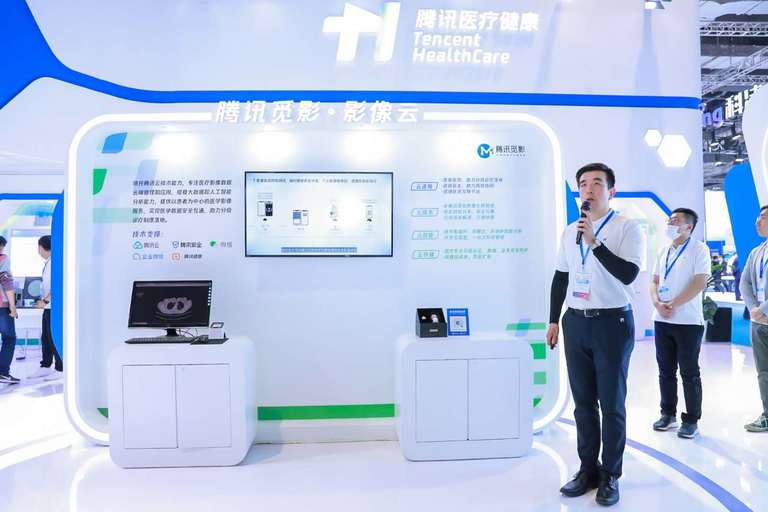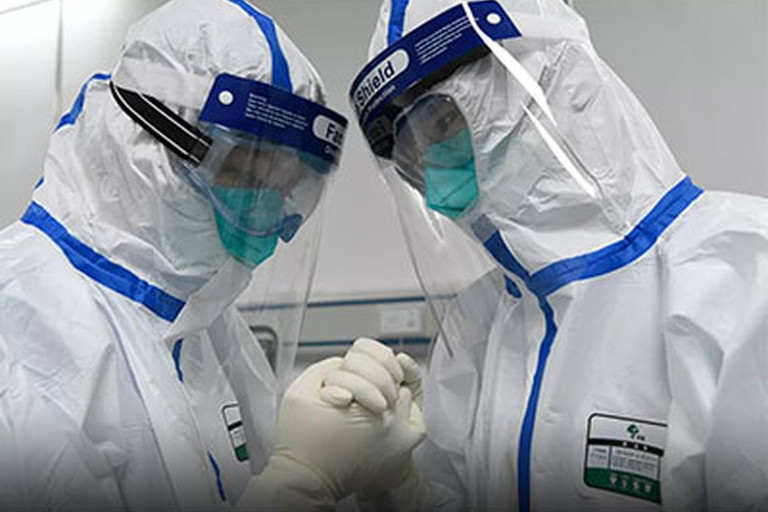Tencent Teams Up With Zhong Nanshan on AI, Big Data Lab to Battle Epidemics
The ongoing novel coronavirus outbreak has made everyone sense the threat of an epidemic. What can be done to quickly put an end to this battle? How can we build a long-standing prevention and control mechanism? The healthcare and technology industries are trying to find answers.
On February 26, 2020, Tencent and Zhong Nanshan announced a partnership to set up a Big Data and AI Joint Lab. The lab is headed by Zhong Nanshan, who is now an academician of Chinese Academy of Engineering, the leader of the high-level expert group of the National Health Commission, and the director of the National Clinical Research Center for Respiratory Disease.
The joint lab has challenging missions. Its immediate priority is to keep fighting against the novel coronavirus, while its long-term objectives will be to utilize big data and AI for the screening, prevention and control, and warning of outbreaks, respiratory diseases and thoracic diseases.
Mission 1: To screen high-risk populations
The key to stop and prevent an epidemic is to identify high-risk populations at the first signs of the epidemic.
The joint lab will establish a screening mechanism connecting online and offline services to provide guidance for disease outbreak such as COVID-19, influenza and hand, foot and mouth disease (HFMD). At the online level, the Tencent Health Mini Program and other platforms will be used to help screen high-risk populations and provide medical advice. The offline part of the mechanism will facilitate coordination and collaboration within and among fever clinics and grassroots-level and other medical establishments to screen for, predict and prevent epidemics.
Similar services have already been provided during the ongoing novel coronavirus outbreak. A good example is the Health service made available to nation-wide users on the WeChat Pay page. This service has provided one billion users with real-time access to epidemic updates, medical knowledge, self-diagnosis tips, online voluntary clinics, directions to fever clinics, and more.
Mission 2: To conduct AI-powered medical screening
Traditionally, a single chest CT scan generates about 300 images, and it takes a physician 5-15 minutes reading them with naked eyes. This is where AI-assisted image reading comes into play. With this in mind, Zhong's team will help Tencent AI become better capable of diagnosing and screening for pulmonary diseases.
The two teams will use test results such as X-ray and CT images as a basis for developing AI-powered techniques for pulmonary disease diagnosis and screening.
The AI CT system using the imaging technology of Tencent AI Medical Innovation System (Tencent AIMIS) and Tencent's cloud technology has been deployed in certain hospitals in Hubei province. With the ability to identify a novel coronavirus case in as short as two seconds, the system has relieved local hospitals of the burden of CT screening.
Mission 3: To build a countrywide disease reporting and forecasting/warning system
The unexpected outbreak of the novel coronavirus has led us to think about how to plan ahead to stop and prevent epidemics. This is also a key focus of the cooperation between Zhong' team and Tencent.
To this end, the joint lab will use AI tools to help in clinical decision-making processes. This plan entails conducting multi-site clinical studies all across the country and building a countrywide disease reporting and forecasting/warning system. The aim is to support clinical therapy decision-making, clinical follow-up, response evaluation, and prognosis evaluation. Such prevention and warning capabilities may play a key role in preventing and stopping future epidemics at the source.
With its reach of massive users as well as its efficient and secure cloud computing and medical AI technologies, Tencent is well equipped to empower Zhong's team in their research and enable better results from their epidemic prevention efforts.
Related Articles

Tencent Announces AIMIS Medical Image Cloud and AIMIS Open Lab to Accelerate Medical AI and Enhance the Delivery of Healthcare Services
2020.10.20

Tencent Health Provides Open Source Tools to Help International Communities Fight COVID-19
2020.03.29



